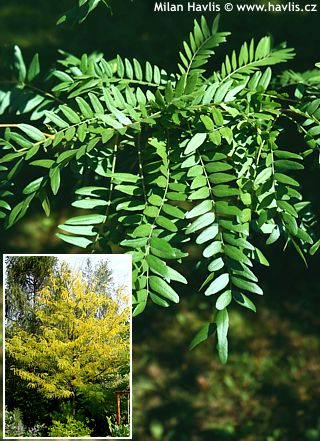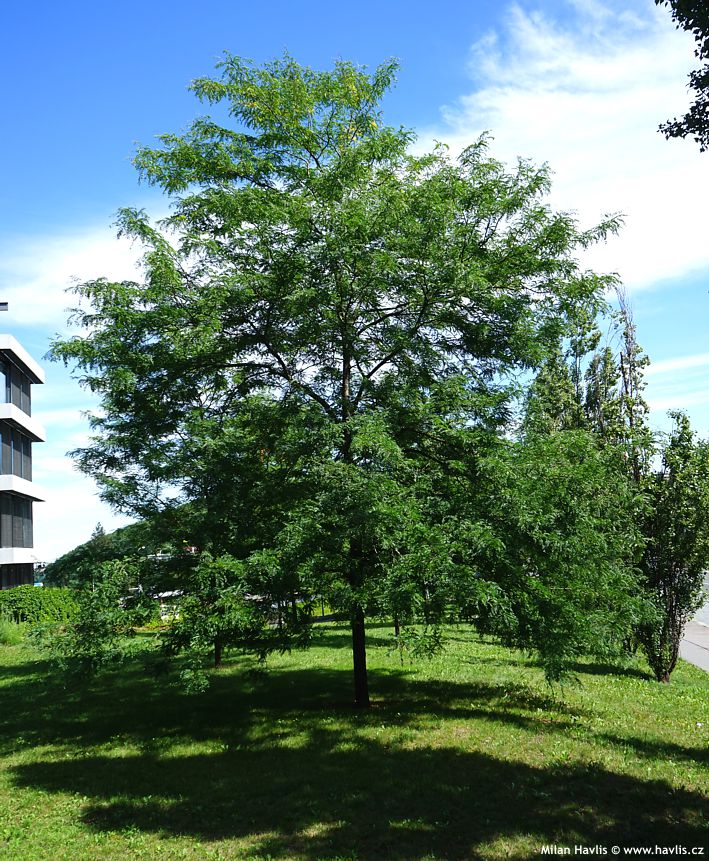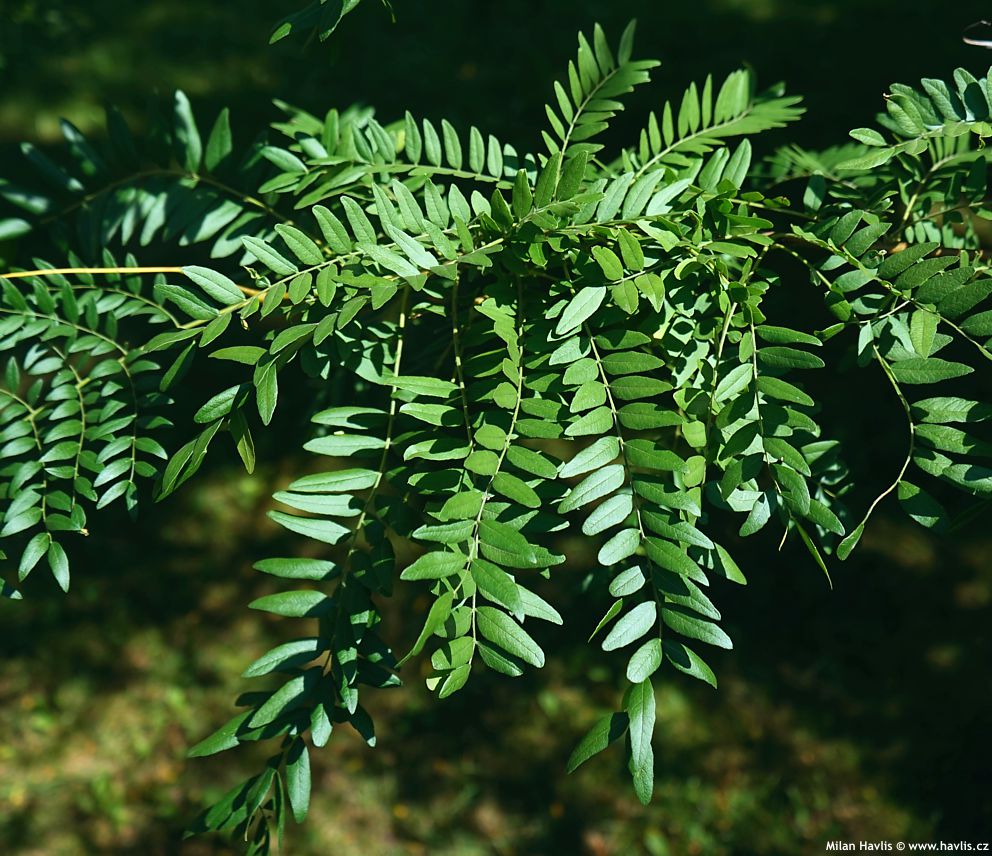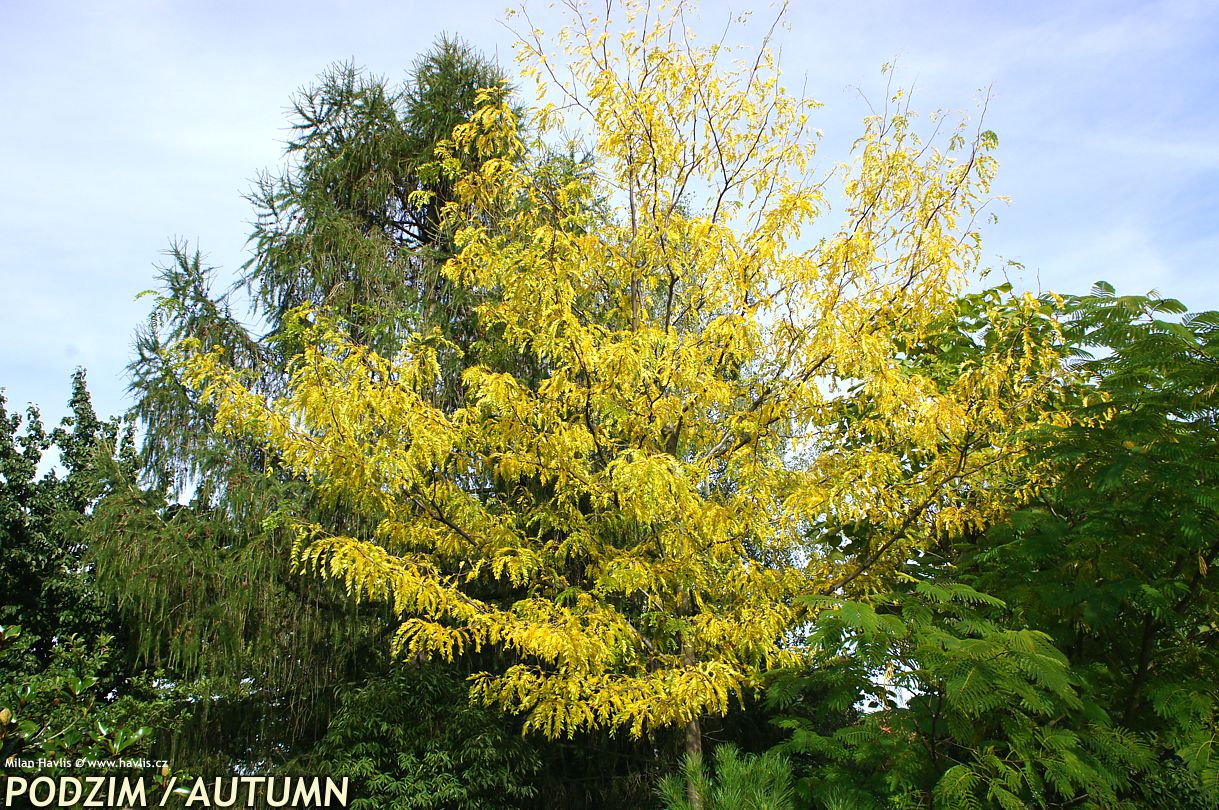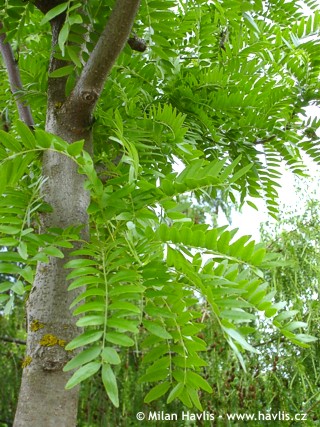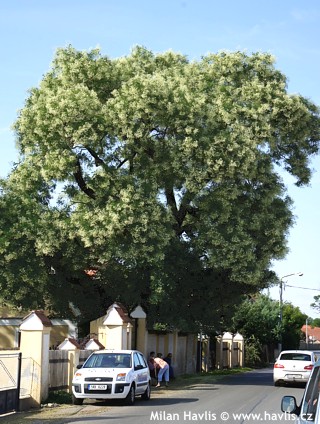Gleditsia triacanthos (var. inermis) 'SKYLINE' honey locust


If you like elegant leaves tha are not as bold as London plane tree leaves for example, have look at this honey locust. It is called SKYLINE and as it belongs to inermis subspecies it represents a thornfree version of this beautiful tree.
Unlike its more popular brother SUNBURST with golden yellow leaves SKYLINE produces rich green leaves. They are fern-like, pinnate and bipinnate (often occurring on the same tree), deciduous. The foliage is dramatic in autumn when it turns bright golden-yellow. SKYLINE honey locust makes a medium dense, rounded, compact canopy that filters enough sun to offer a dappled shade for shrubs and other plants living underneath its branches. The fragrant, melliferous flowers are tiny and hang in small, inconspicuous clusters in early summer and attract insects as they smell by ginger-bread.
Another advantage of this beautiful tree is its adaptability. It is soil and pollution tolerant and can live happily in urban areas with limited moisture in summer and practically no fertilizing. Though, in private gardens it will be thankful for moist, fertile soil. Hohoney locust needs a sunny location. Fully hardy to -34°C (USDA zone 4).
Last update 27-09-2012.

































